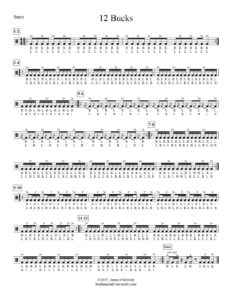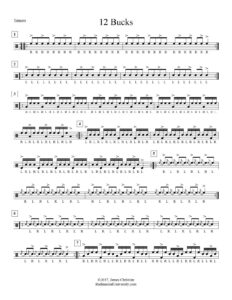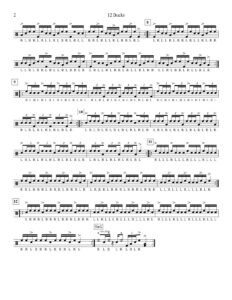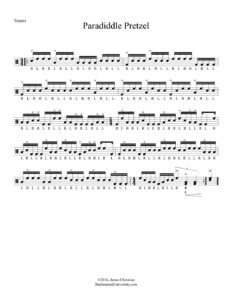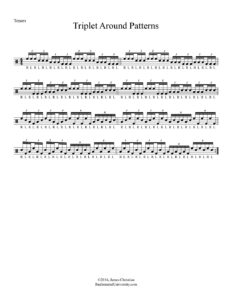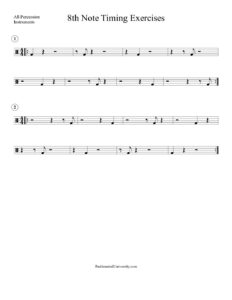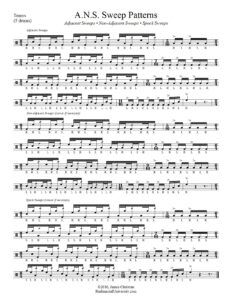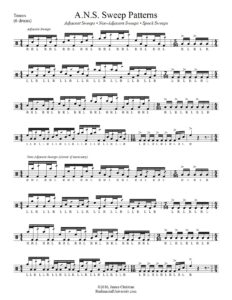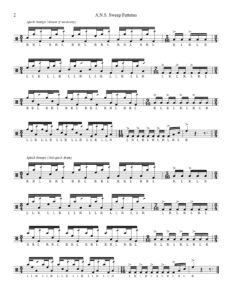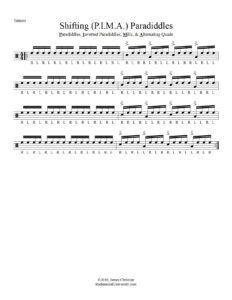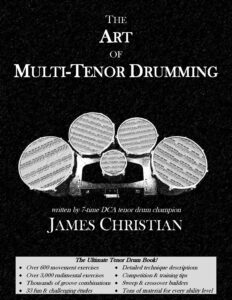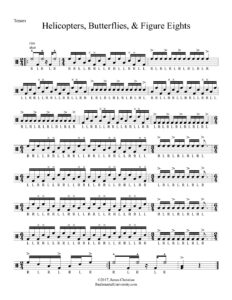
Here is a new exercise for marching tenors that focuses on the three most common crossover sweep patterns: helicopters, butterflies, and figure eights.
In case you are unfamiliar with these terms, helicopters are found in measures 2 and 4. Butterflies are found in measures 6 and 8. Figure eights are found in measures 10 and 12. The final pattern, found in measures 14 and 16, is not as common, but it makes logical sense in the context of this exercise. I call the pattern inward figure eights. With all of these patterns, they are presented first with right hand lead and then with left hand lead.
All these sweep patterns are based on the visual “picture” created from their movement when played rapidly. Helicopters look a bit like helicopter blades moving. Butterflies create sort of a butterfly wing shape. Figure eights create an “8” shape. Inward figure eights follow the same motion, but the sweeps move inward instead of outward.
The measures that do not contain sweeps are meant as a groovy check pattern. I find the accent and rim shot patterns more fun to play than a measure of straight singles (or something similarly basic). I suspect most readers will enjoy them more as well.
This exercise is great for all ability levels. Beginner players will want to take each measure very slowly in order to learn these patterns. You may need to start around 80 beat per minute (bpm) on the metronome. Advanced players may be able to treat the exercise in more of a double time fashion, playing in a tempo range of 240 bpm—or faster!
As always, focus on proper playing zones. Avoid rim clicks and aim for 100% accuracy. Maintain even sounding doubles, so that both notes are of equal volume. Enjoy!

